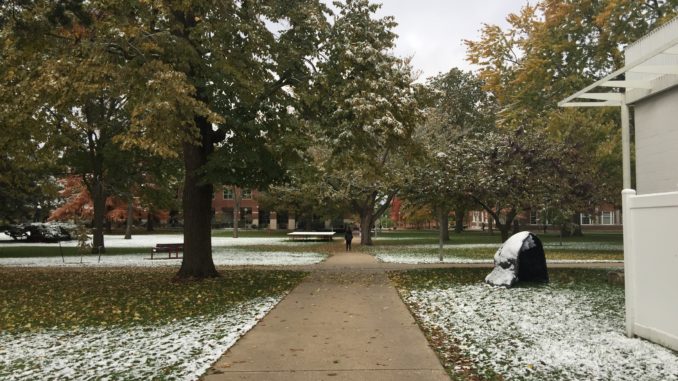
The Missouri Department of Conservation awarded Truman State University the $10,000 Tree Resource Improvement and Maintenance Grant.
The TRIM Grant is given to several government entities and nonprofit groups for the care of publicly owned trees. Truman will also need to match the amount of the grant, but this can be done through an in-kind match, which means the money put toward paying the grounds workers to implement the improvements can be counted as part of the match, University Comptroller Mike Garzaneli said. There are several improvements planned for the tree population on campus.
“The grant money is primarily going to be focused on proper pruning and teaching people how to take care of trees,” Campus Planner Lori Shook said. “There are also a few trees that will be removed due to health and age.”
The TRIM Grant can be used for improvements on the current trees on campus, such as pruning them and making sure the trees’ limbs will not fall, improving the safety of those who walk under the trees, Shook said. Another application of the grant is the removal of dead trees, however, it is required to replace all removed trees with native species. A third use of the grant is to educate those who will be working on the trees.
The third use of the money from the grant will be used to bring in a local arborist to teach the grounds crew how to properly trim and prune the trees on campus in a way that will keep the trees healthy, Shook said.
“One of the trees here on campus that is of a fairly good size has recently died and it’s out on The Quad, so the biggest part of that is to make sure it is taken down in a safe manner,” Garzanelli said. “Depending on the different quotes we have gotten, taking down a large tree can be anywhere from $500 to a few thousand dollars.”
Truman does put importance on having a variety of native trees, as seen in the campus tree walks. There are two tree walks on campus, one at the red barn near Pershing Building and another on The Quad. The maps of these walks can be found on Truman’s website. A tree walk is a path that has a variety of trees to look at and learn from, and the walks here on campus have plaques near the base of some trees that state what kind of tree it is, associate professor of biology Elisabeth Hooper said.
“Ultimately, in the future, we would like to have campus be declared an arboretum,” Hooper said. “We would have just one map of campus focusing in on where some of the interesting trees are.”
An arboretum is similar to a botanical garden, but focused on trees. The growth of tree walks throughout campus will add to the tree diversity on campus, Hooper said. The TRIM Grant specifically can help Truman with expanding tree walks.
Hooper teaches with the tree walks and is also a member of the Campus Tree Advisory Committee. The Campus Tree Advisory Committee was a driving force in Truman acquiring the TRIM Grant. The committee is comprised of members from the Truman and Kirksville communities. This group came together with individuals on campus to secure the grant. Having the Campus Tree Advisory Committee is one of the requirements for Truman to be considered a Tree Campus USA by the Arbor Day Foundation. The City of Kirksville is also recognized by the Arbor Day Foundation as a Tree City USA. This affiliation with the Arbor Day Foundation acknowledges Truman, as well as Kirksville, as being tree friendly.
